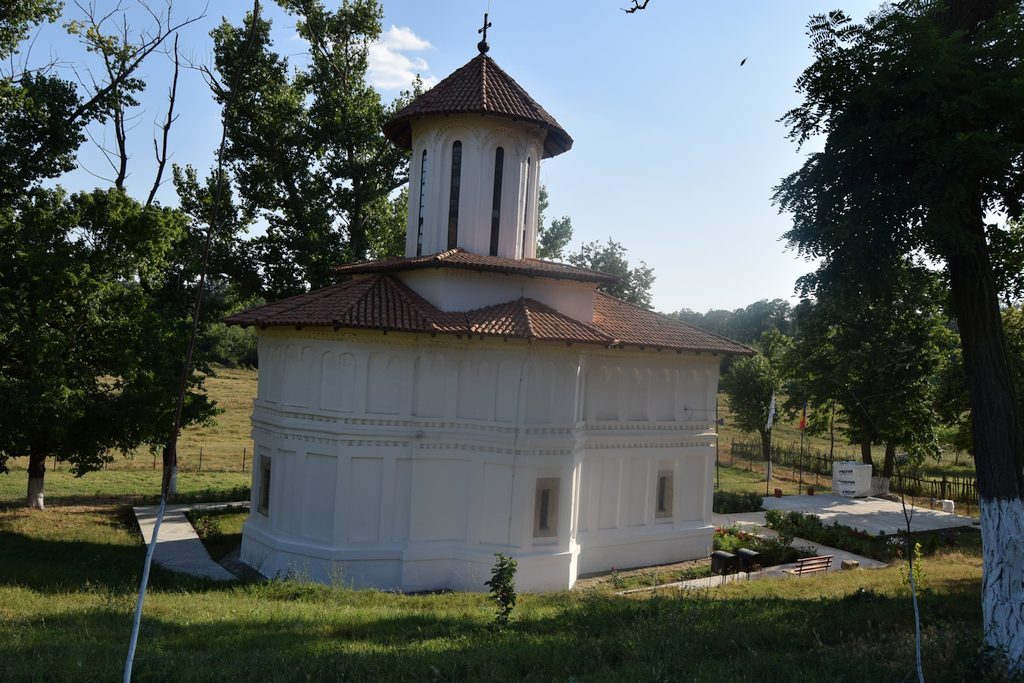

Saint Dumitru Church, also known as Coșoteni Monastary, is the central church in the former Tigania Monastary – Drăgănești. Around this small church a clerical crowd was gathered and here is also where the first schools in Teleorman county.
Founded in 1647, the Coșoteni church is mentioned in historian Stoicescu’s biography under the name “Draganesti Monastary – Saint Dumitru”. The church is redone by Matei Basarab, together with sword bearer Dinicu Buicescu and cupbearer Drăgușin Deleanu, in 1647 and it is redone in 1708.
In the Coșoteni church we find the old Romanian style, from the beginning of the 17th century, with a narthex and nave with side apses and an altar, separated from the nave with a wall iconostasis. The church was enlarged with an exonarthex, vanished in time and it was probably an important church in this area considering the status of its founders.
A set of repairs was done in 1936, when the plaster that covered the entire church was cleaned and the tower was redone, the wooden belts that still last still being recent.
The 1940 earthquake caused severe damage to the monuments and the one in 1977 brought it to collapse, being forbidden to officiate any service here for a while.
The consolidation restoration works were begun in 1997, being finalized on December 20th 2006. In 2004, there were emergency interventions to save the wall paintings and the fresco technique. Today in the church some services are held for the believers in town. Around the church there are numerous tombs, a sign that it was used as a cemetary for a while.
Coșoteni village, close to the monastary, is the birth place of famous bookman Radu Grămăticul, who will translate a Tetraevangheliar, in 1574, kept in the British Library today. In a slavic note at the end of the Tetraevangheliar, the translator marks his birthplace village as belonging to the Monastary near Roșiorii de Vede. The names of some monastarial villages were rendered in Romanian, later, as Mănicești, Măniceni ( Argeș – belonging to Tutana Monastary), Măneciu (two villages belonging to Cheia Monastary).
